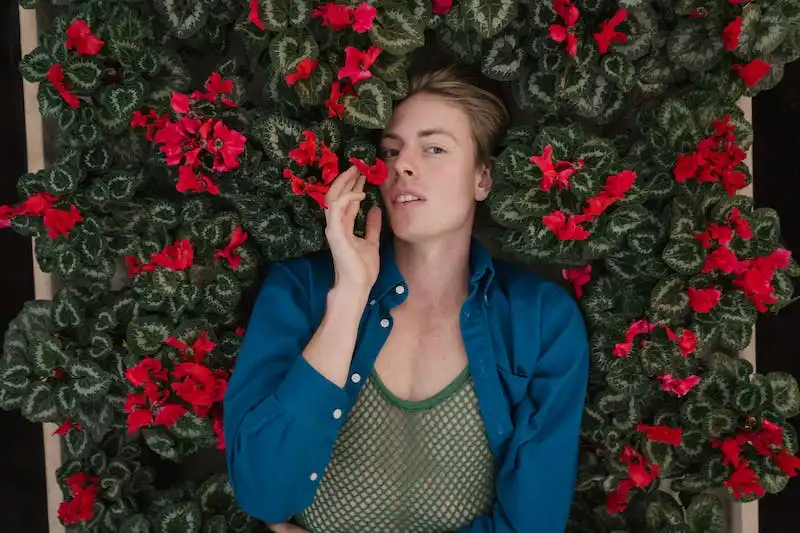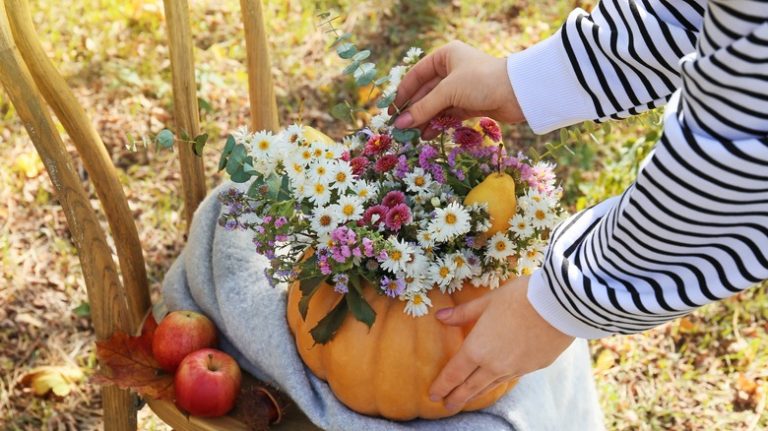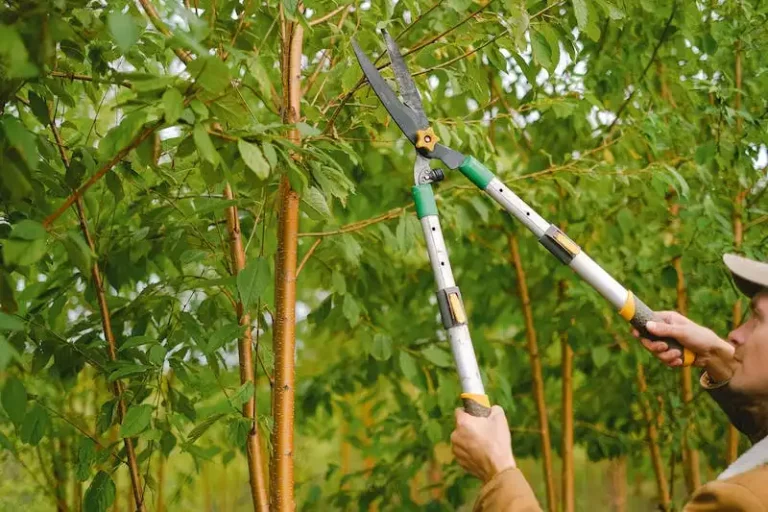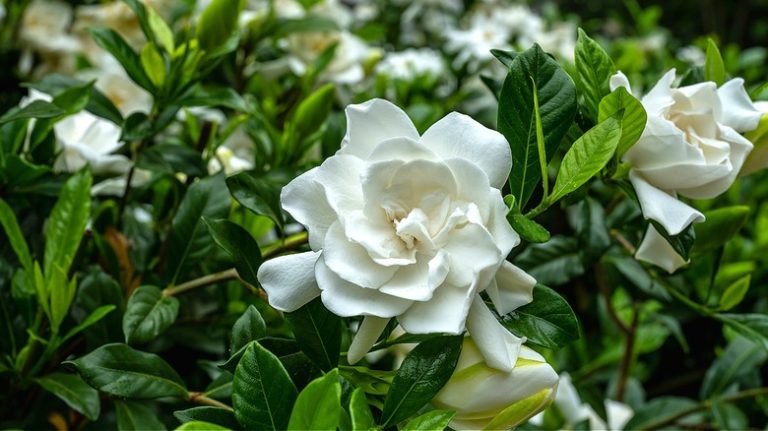If you’re looking to add a touch of the tropics to your outdoor space, the Bird-of-Paradise plant is a perfect choice. With its vibrant blooms and tall stems, this beautiful plant will make a statement in any garden or patio. The Bird-of-Paradise, also known as Strelitzia spp., is native to South Africa and is well-adapted to warm and sunny conditions.
One of the great things about the Bird-of-Paradise is that it can withstand a variety of conditions, making it a versatile addition to your garden. It can grow to impressive heights and its giant flowers will attract plenty of attention from both humans and birds, living up to its name. The blooms appear in spring and can last for several weeks, adding a burst of color to your outdoor space.
When it comes to caring for your Bird-of-Paradise plant, it’s important to get a few things right. They like lots of light, so be sure to place them in a sunny spot outside. As tropical plants, they thrive in organic-rich soil that is well-draining. Water them regularly, but be sure not to overwater as this can cause their roots to rot.
Propagation of the Bird-of-Paradise can be done by dividing the clumps or by collecting seeds. However, it’s worth noting that they can take some time to flower when grown from seed, so buying an established plant is often the best option. When buying a Bird-of-Paradise, look for healthy plants with no signs of insect damage or disease. You can find them at your local garden center or order them online from reputable sellers.
One slight problem you may encounter with your Bird-of-Paradise is the curling of its leaves. This can be caused by a number of factors, including underwatering or overwatering, extreme temperatures, or insufficient light. To solve this problem, make sure you are providing the right conditions for your plant and consider adjusting its placement to ensure it gets enough light.
These stunning plants will bring a touch of the tropics right to your doorstep. So why not buy a Bird-of-Paradise and add a bit of exotic beauty to your outdoor space? Whether you’re looking for some inspiration for your garden or want to create a whole tropical paradise, the Bird-of-Paradise is sure to impress.
Sources:
- Kimberly Nicolai, “Growing Bird-of-Paradise Plants in the Garden,” Getty, [Link]
- “Bird-of-Paradise: Caring for Strelitzias,” Spring Hill Nursery, [Link]
- “Bird-of-Paradise,” The Old Farmer’s Almanac, [Link]
Bird-of-Paradise Is the Stunning Plant Your Garden Is Missing
If you’re looking to add a touch of tropical beauty to your outdoor space, the bird-of-paradise plant is a must-have. This stunning plant, scientifically known as Strelitzia spp., is native to the southern regions of Africa and can grow up to six feet tall. With its vibrant orange and blue blooms and unique tropical foliage, it’s sure to be a showstopper in any garden.
The bird-of-paradise plant is known for its large, fan-shaped leaves and long stems that resemble the bird it’s named after. Its flowers appear in spring and summer and can last for several weeks, adding a vibrant burst of color to your garden. The blooms are a vibrant orange hue, with blue tongues that curl up slightly at the end, giving them the appearance of a tropical bird in flight.
When it comes to growing bird-of-paradise plants, there are a few things to keep in mind. Firstly, they prefer bright, indirect light, so place them near a window where they can get plenty of sunlight without direct exposure. They also require regular watering, but be careful not to overwater as this can lead to root rot. It’s a good idea to let the soil dry out slightly between watering sessions.
If you’re considering adding a bird-of-paradise to your garden, you can buy them online or at your local nursery. There are several different varieties to choose from, including the Strelitzia nicolai, which has white flowers, and the Strelitzia reginae, which has orange and blue flowers. These plants are relatively hardy and can withstand a range of temperatures, making them suitable for outdoor growing in many climates.
Gardening advice for bird-of-paradise plants suggests planting them in well-draining soil and providing regular fertilization. This stunning plant is generally low-maintenance and doesn’t require much attention, but providing it with the proper care and conditions will help it thrive and produce more blooms.
So, if you’re looking to add a touch of the tropics to your garden, consider adding a bird-of-paradise plant. With its stunning blooms, unique foliage, and ability to withstand a range of temperatures, it’s sure to become the focal point of your outdoor space.
Growing Bird-of-Paradise
If you’re wondering where to buy a bird-of-paradise plant, you have several options. Many garden centers and nurseries carry bird-of-paradise plants, both online and in-store. You can also find them for sale on various online platforms. When buying a bird-of-paradise, look for a healthy plant with plenty of green foliage and strong stems.
Watering is an important aspect of caring for a bird-of-paradise. These plants require regular watering, but you should allow the soil to dry out slightly between waterings. A good tip is to use a tray or saucer under the pot to catch any excess water and prevent the roots from sitting in standing water.
The bird-of-paradise, or strelitzia, is known for its stunning orange and white flowers that resemble a bird in flight. These flowers typically bloom in the spring, but they can appear at other times of the year as well. To encourage flowering, make sure to place your bird-of-paradise plant in a sunny location with plenty of light.
Outdoor bird-of-paradise plants can withstand a range of temperatures, but they prefer warm climates. In colder zones, it’s best to grow bird-of-paradise plants indoors or in containers that can be moved inside during the winter months. When planting your bird-of-paradise outdoors, make sure to choose a well-draining soil and provide regular fertilization to keep the plant healthy and thriving.
If you’re encountering any problems with your bird-of-paradise plant, such as curling leaves or brown spots, there are a few steps you can take to solve the issue. First, check for any signs of insects or pests and treat the plant with an appropriate insecticide if necessary. If the problem persists, it could be a sign of a nutrient deficiency or watering issue, so adjust your care routine accordingly.
The bird-of-paradise plant has its origins in the tropics, where it can reach impressive heights and create a stunning focal point in any garden. The bird-of-paradise plant species, such as the Strelitzia nicolai or the Strelitzia reginae, are popular favorites among gardeners due to their unique flowers and foliage. If you’re looking for some inspiration, there are plenty of online resources and links to help you make the most of your bird-of-paradise plant.
Bird-of-Paradise’s Origins
The Bird-of-Paradise plant, scientifically known as Strelitzia spp., is native to South Africa. It belongs to the Strelitziaceae family and is a part of the Zingiberales order. This stunning plant has become a popular choice for gardens and outdoor spaces all over the world.
The Bird-of-Paradise’s origins can be traced back to the tropics, where they thrive in warm and humid environments. However, they can also be grown in other zones, as long as their needs are met.
One of the main characteristics of the Bird-of-Paradise plant is its unique flowers, which are vibrant and colorful, often resembling a bird’s beak or head. These blooms come in various colors, such as orange, blue, white, and brown. They are a true source of inspiration for many, and their beauty adds a touch of exoticism to any garden.
Caring for a Bird-of-Paradise plant is relatively easy, as long as you understand its needs. They require plenty of light, so it’s best to place them in a spot where they will receive full sun or bright, indirect light. These plants can withstand high temperatures, but they should be protected from frost and extreme cold.
Watering is also an important aspect of caring for a Bird-of-Paradise plant. They require regular watering, especially during the spring and summer months. However, be careful not to overwater them, as this can lead to root rot. The soil should be slightly moist, but not soggy.
In terms of fertilizer, Bird-of-Paradise plants have specific needs. They require a balanced fertilizer with a higher phosphorus content, especially during the growing season. It’s advisable to use a slow-release fertilizer or a liquid fertilizer diluted to half strength.
Another common problem with Bird-of-Paradise plants is the curling of their leaves. This can be a sign of underwatering or exposure to cold temperatures. To solve this problem, make sure to water them properly and keep them in a warm environment.
Propagating Bird-of-Paradise plants can be done through division or by using seeds. Division is the easiest method, where the root clump is divided into smaller sections, each with a part of the root and a few stems. Planting these sections in a tray with well-draining soil will allow them to develop into new plants.
In summary, Bird-of-Paradise plants are native to South Africa and are a true symbol of beauty and elegance. They can be grown outside of their natural habitat, as long as their needs are met. With proper care and attention, these stunning plants can reach impressive heights and bring a touch of the tropics to any garden.
Bird-of-Paradise’s Beautiful Blooms
The bird-of-paradise’s beautiful blooms are one of the main reasons why this outdoor plant is so popular. Their stunning flowers, which resemble the colorful plumage of tropical birds, make them a favorite among gardeners.
One of the most distinctive features of the bird-of-paradise’s blooms is their unique shape. The flowers appear to be shaped like a bird’s head with a long beak, giving them their name. They come in a variety of colors, including orange, yellow, and even blue. Some varieties even have white blooms.
Growing a bird-of-paradise plant outdoors can be a bit of a challenge, particularly in colder climates. They are native to tropical regions and need plenty of sun and warm temperatures to thrive. In zones with colder winters, it’s best to grow them in containers that can be brought inside during the colder months.
If you’re considering buying a bird-of-paradise plant, there are a few things to keep in mind. Look for a reputable online source or a local garden center that specializes in tropical plants. Make sure the plant you buy is healthy and has well-established roots. Inspect the leaves for any signs of damage or disease.
When planting your bird-of-paradise outdoors, choose a sunny spot in your garden with well-draining soil. These plants prefer organic-rich soil, so consider adding compost or other organic matter to improve the soil quality. Water regularly, but be careful not to overwater, as the plant is susceptible to root rot.
One problem you may encounter when growing bird-of-paradise outdoors is the curling of the leaves. This can be caused by a variety of factors, including low humidity, improper watering, or pests. To solve this problem, make sure the plant is in a location with higher humidity, provide regular watering, and wipe the leaves with a damp cloth to remove any pests.
In Southern regions where temperatures don’t dip too low, bird-of-paradise plants can be grown outside year-round. They can reach heights of up to six feet or more, so make sure you have enough space for them to spread out. Regular pruning can help control their size and shape.
With the right care and conditions, bird-of-paradise’s beautiful blooms will be a stunning addition to your outdoor garden. So, jump into the world of growing bird-of-paradise plants and enjoy their exotic beauty.




